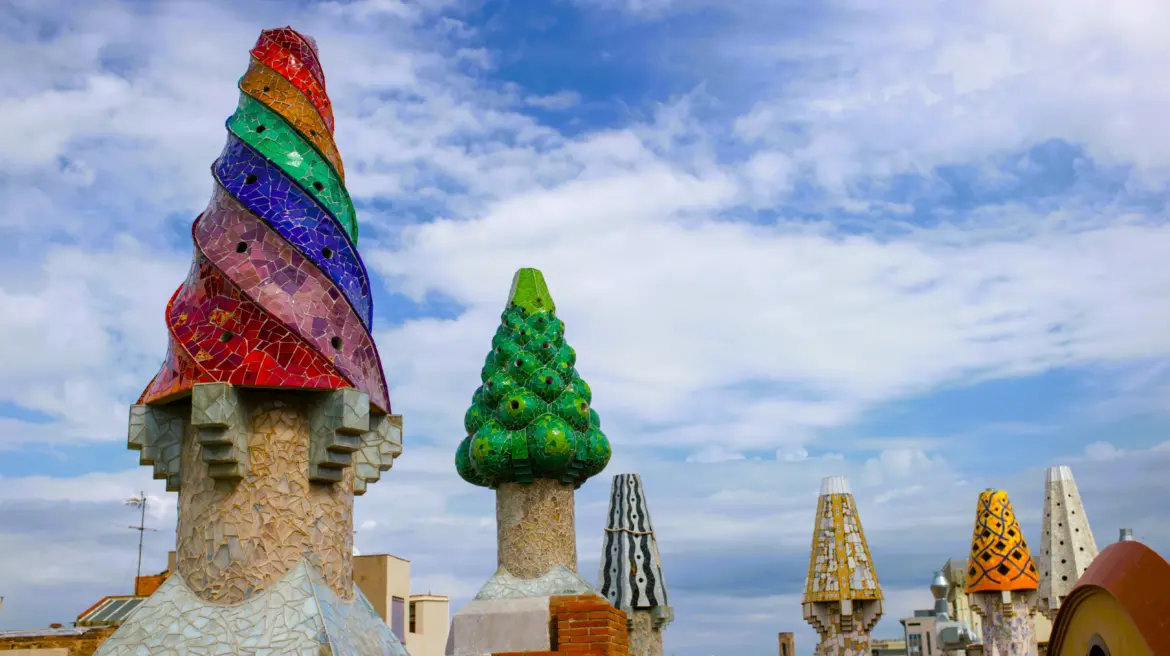Hola, travelers! 🌸 Barcelona has a way of dazzling you at first sight, with Gaudí’s mosaics, golden beaches, and the rhythm of life spilling from every terrace. But the city’s true charm hides just beneath the surface, in quiet corners where time slows down and locals linger. On my latest visit, I wandered beyond the icons, and what I found were places that whispered rather than shouted: secret gardens, shaded courtyards, hilltop views, and sunlit surprises. Here are 10 hidden gems of Barcelona that captured my heart and might just capture yours too!
1. Jardí d’Aclimatació de Montjuïc – Nature & Reflection
Tucked into the slopes of Montjuïc, the Jardí d’Aclimatació feels like a world apart. Designed in 1930 by Nicolau M. Rubió i Tudurí, this tranquil garden holds over 230 species of Mediterranean and subtropical plants. Palm trees sway gently in the breeze; hibiscus and bougainvillea bloom in bursts of color. As I walked along its terraced paths, the sound of the city faded, replaced by birdsong and the hum of cicadas. Hidden among the greenery rests the AIDS Memorial, inaugurated in 2003, a simple olive tree and stone marker that honor lives touched by HIV and AIDS. The air smelled faintly of rosemary and sun-warmed stone, and I sat for a while in the shade, feeling the quiet strength of the place.
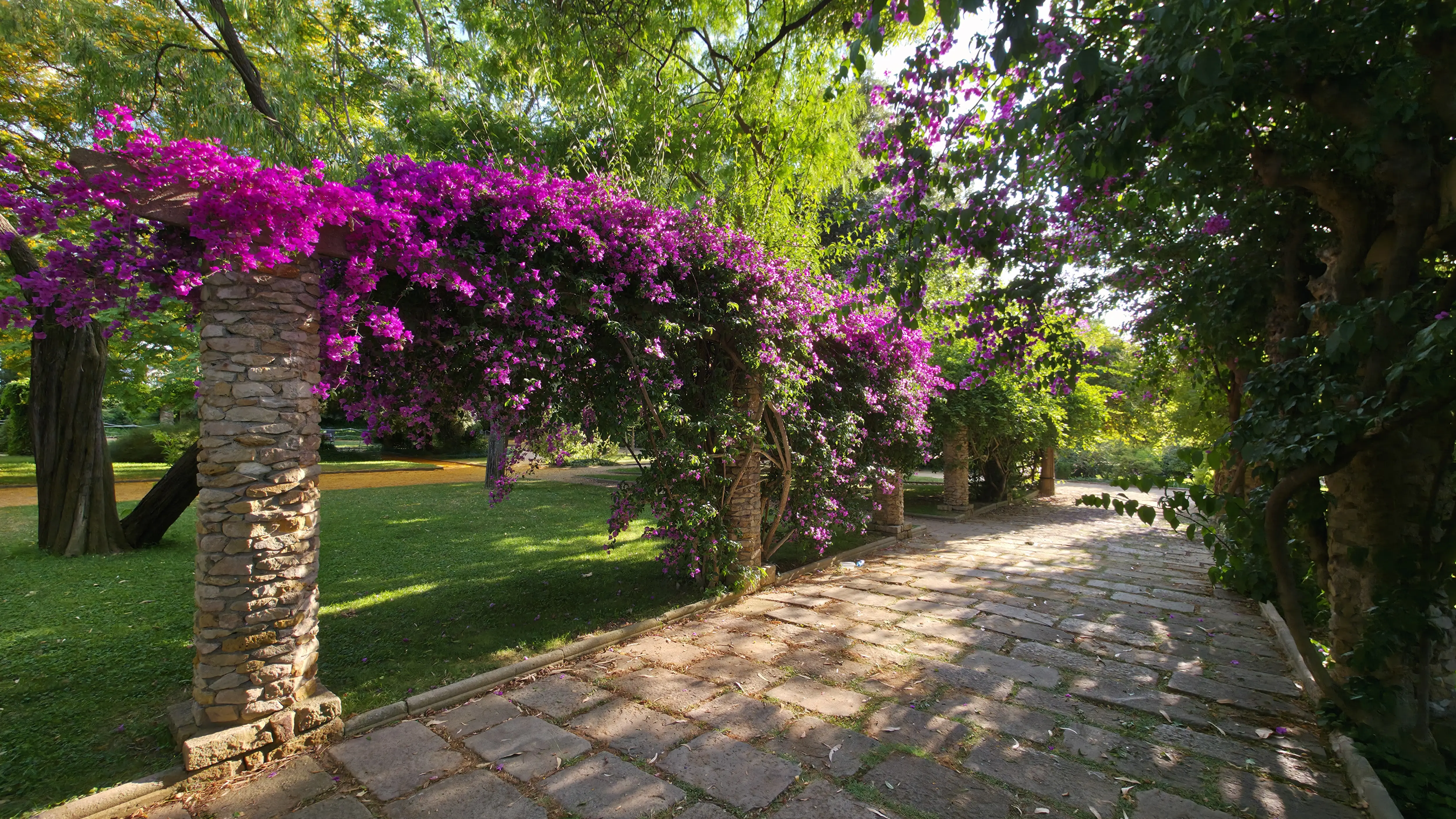
Bubbly Tip: Visit in late afternoon when golden light filters through the trees. It’s serene and perfect for reflection.
2. Carrer del Bisbe – The Whispering Bridge
Wandering through the Gothic Quarter, I turned down Carrer del Bisbe and felt transported. The narrow stone alley, lined with centuries-old buildings, opens to reveal the Pont del Bisbe, a neo-Gothic bridge connecting two government buildings above the street. When sunlight spills through its ornate tracery, the bridge glows like lace carved from stone. Locals say that if you walk beneath it and spot the tiny skull carved into the base, you’re destined to return to Barcelona. I smiled – superstition or not, I already knew I would.
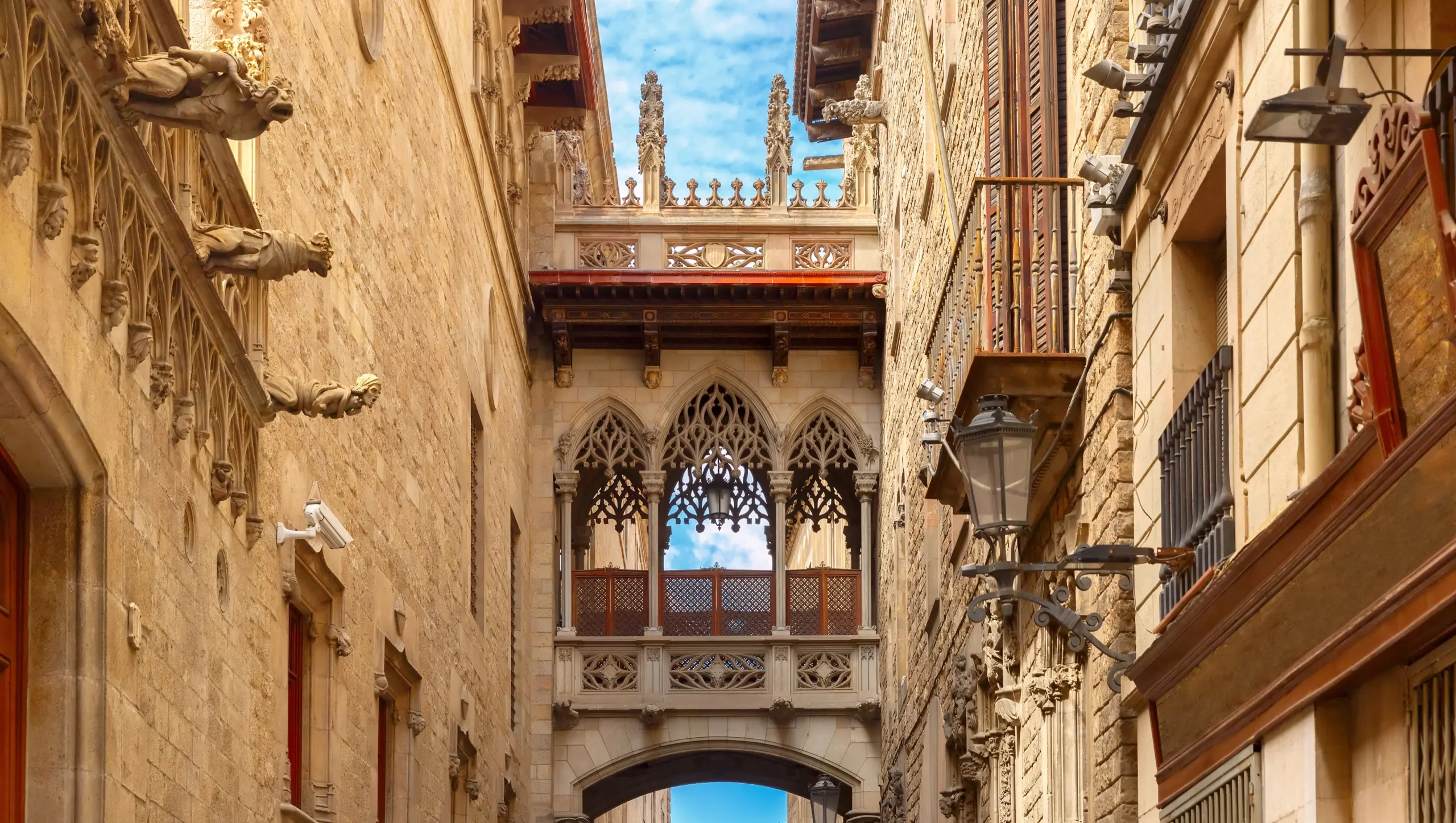
Bubbly Tip: Go early in the morning to catch the bridge bathed in soft light and enjoy a quiet Gothic Quarter all to yourself.
3. El Born Cultural Center – Beneath the Glass
At first, El Born Cultural Center looks like a sleek modern pavilion. Step inside, though, and history unfolds below your feet. Beneath its glass floor lie the preserved remains of a medieval neighborhood destroyed in 1714, an entire world frozen in time. I walked the elevated walkways slowly, imagining life in those narrow streets centuries ago. It was quiet except for the creak of the floorboards and the distant murmur of voices, the kind of museum that doesn’t need words to move you. When I stepped back outside into the sunshine, I grabbed a café con leche nearby and watched Barcelona bustle above a city still sleeping below.
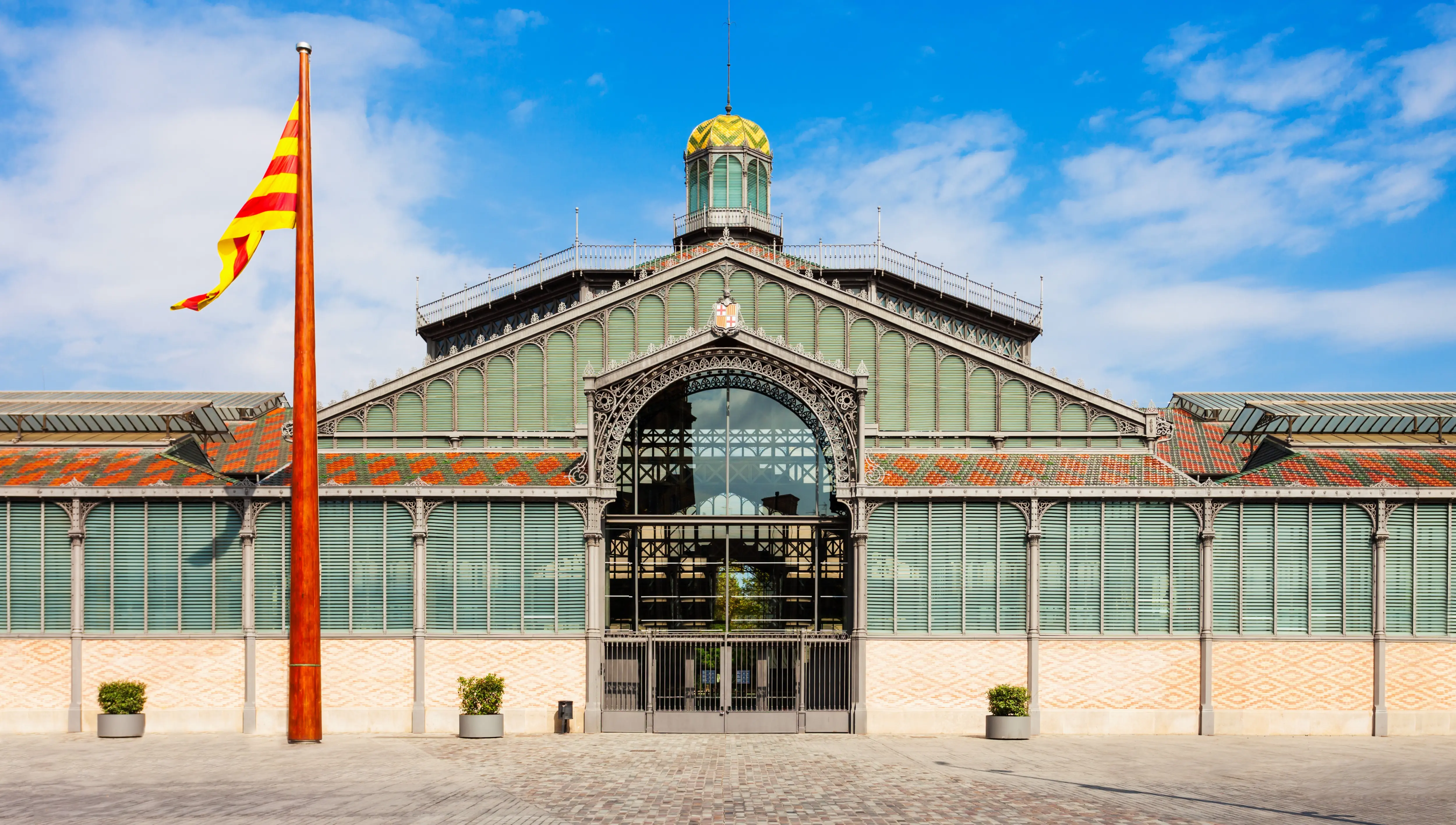
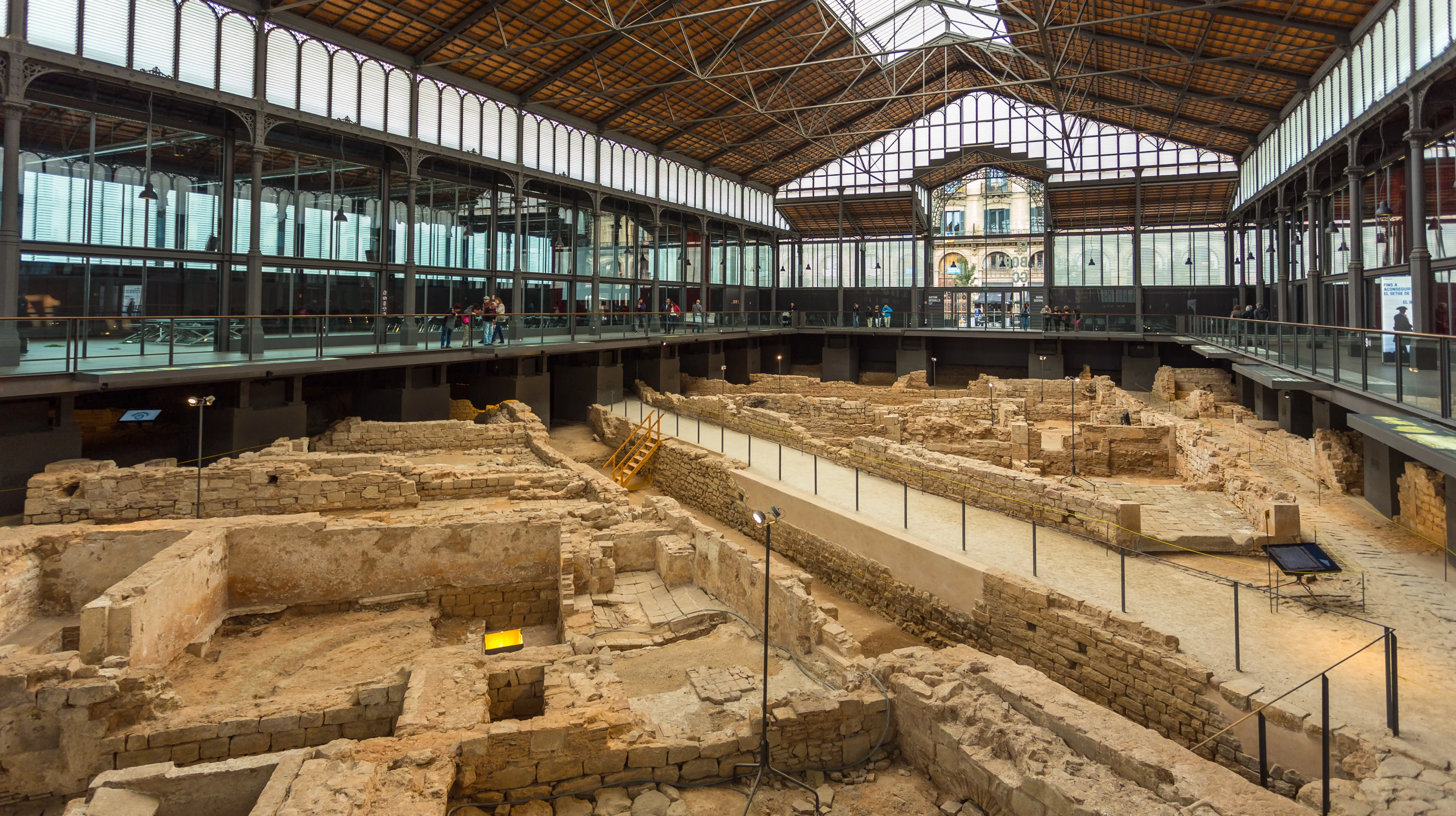
Bubbly Tip: Admission is free! It’s a wonderful, cool refuge during the heat of the day, and a powerful glimpse into the city’s and El Born’s layered history.
4. Hospital de la Santa Creu i Sant Pau – A Modernist Masterpiece
Just a short walk from Sagrada Família stands one of Barcelona’s most exquisite secrets: the Hospital de la Santa Creu i Sant Pau (Hospital of the Holy Cross and Saint Paul), designed by modernist architect Lluís Domènech i Montaner. Once a working hospital, today it’s a UNESCO World Heritage Site – a kaleidoscope of domes, mosaics, and stained glass that feels more like an open-air palace than a medical complex. As I wandered through the tiled corridors and flower-filled courtyards, I was struck by the idea that healing here once included beauty, that art itself was part of recovery. The turquoise tiles shimmered in the sun, the mosaics glowed like jewelry, and hardly anyone else was there.
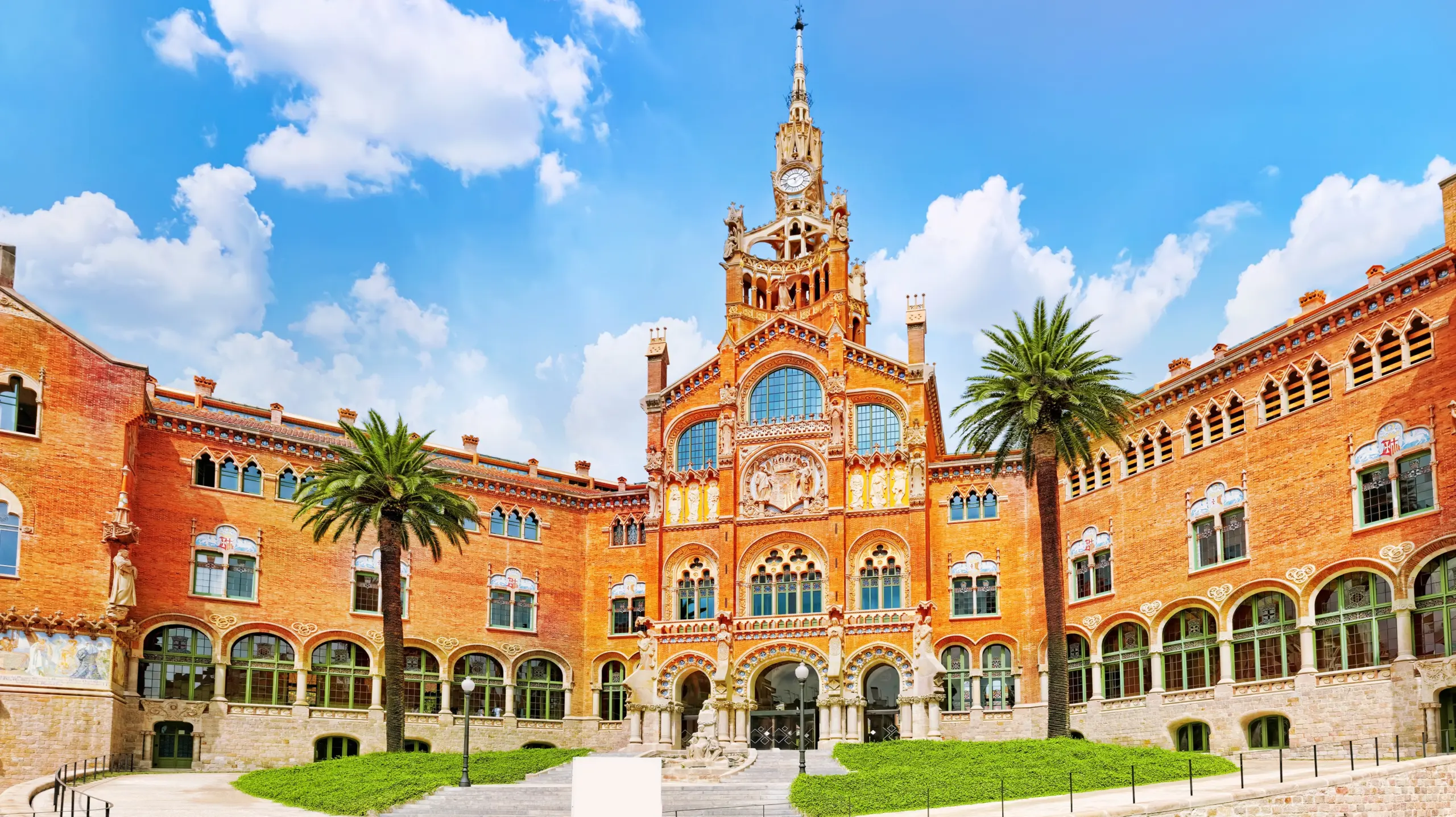

Bubbly Tip: Visit around midday when sunlight streams through the stained glass, it’s dazzling!
5. Bunkers del Carmel – Barcelona from Above
High above the city, on Turó de la Rovira, the Bunkers del Carmel offer one of the best views in all of Barcelona. Originally built as anti-aircraft defenses during the Spanish Civil War, they’re now a peaceful gathering spot for locals and travelers. The climb is a bit steep, but the reward is pure magic: a 360° panorama stretching from the mountains to the sea. I reached the top just as the sun began to set, locals perched on the old concrete platforms, music playing softly, cava bottles clinking. As the city turned gold, someone started to clap, and soon everyone joined in.
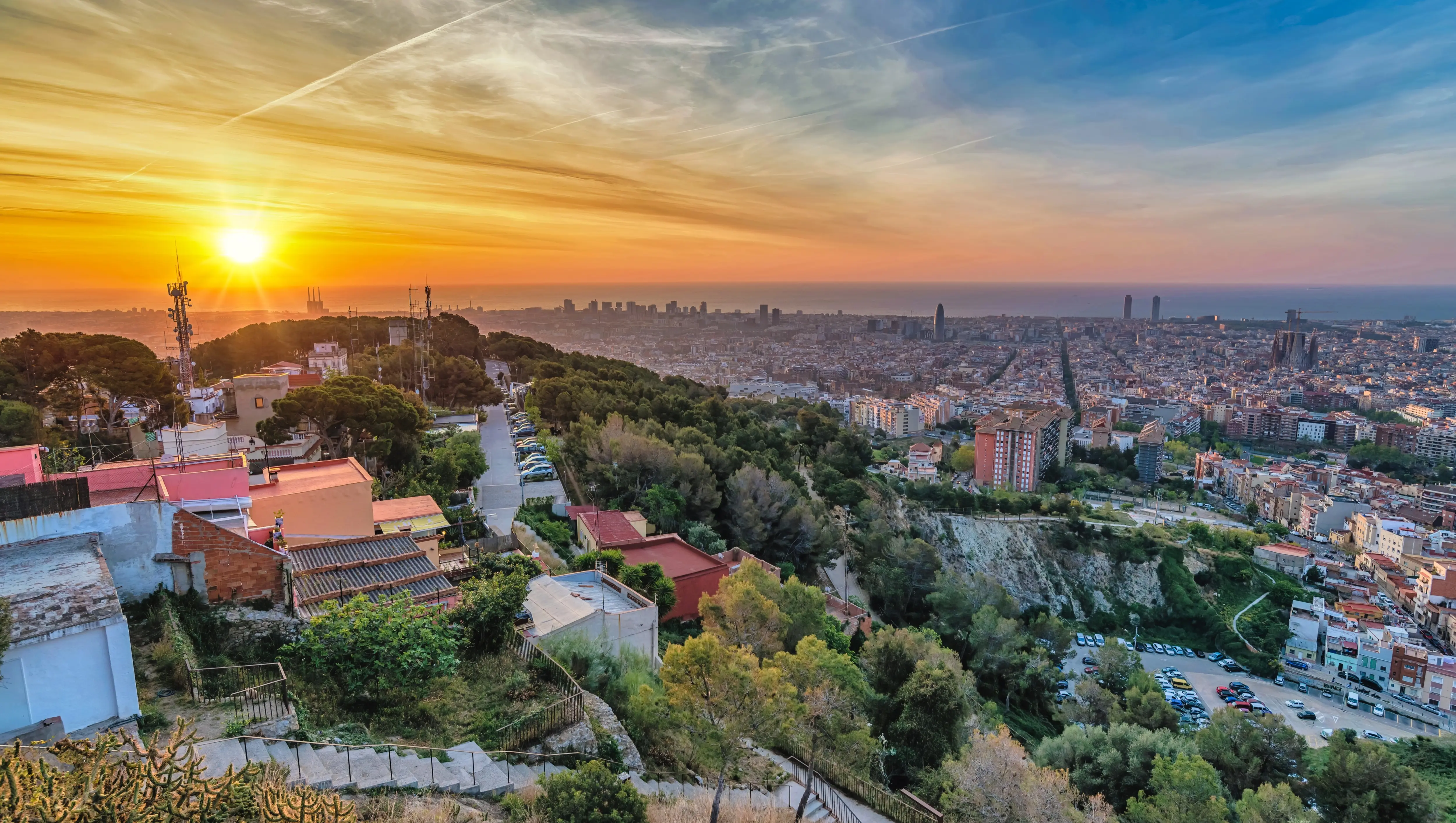
Bubbly Tip: Arrive 45 minutes before sunset for the best light and bring a small picnic, it’s one of the most beautiful views you’ll ever see.
6. Cementiri de Montjuïc – Marble & Memory
The Montjuïc Cemetery is one of Barcelona’s most poetic places, a silent hillside overlooking the Mediterranean, filled with marble angels, intricate tombs, and sculptures that tell stories of love, loss, and faith. As I wandered its terraced paths, the sea glimmered below and gulls called overhead. Each turn revealed another masterpiece of architecture and emotion – Gothic spires, Art Nouveau mausoleums, flowers laid tenderly on graves. It didn’t feel somber but strangely comforting, as if the city’s spirit lived here too, quietly watching over the waves.

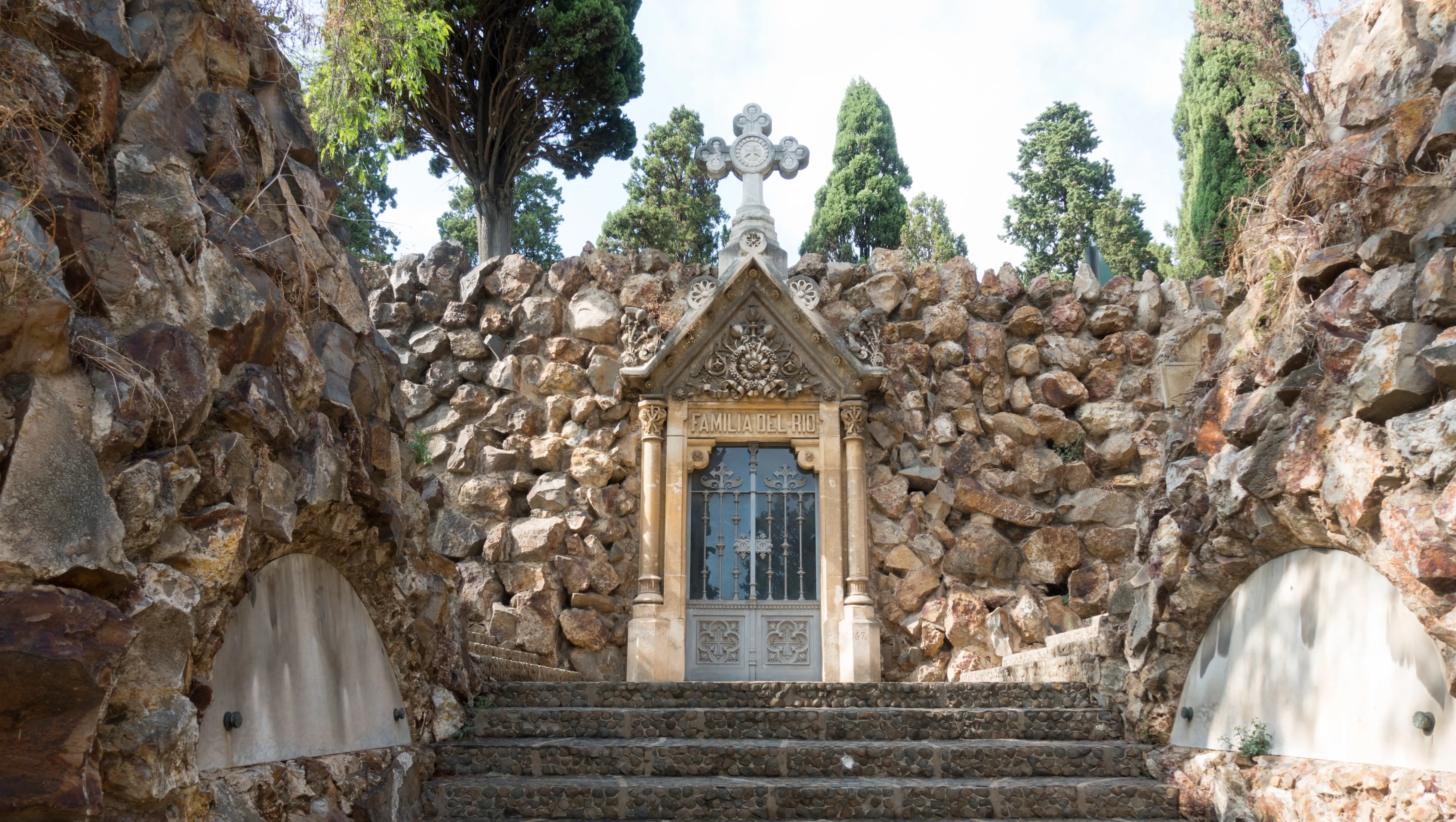
Bubbly Tip: Take the cemetery’s free weekend tour, it offers fascinating insights into its art and symbolism.
7. Jardins de Mossèn Costa i Llobera – Cacti by the Sea
Barcelona isn’t all palm trees and pines, some corners feel like stepping into another continent. The Jardins de Mossèn Costa i Llobera, one of Europe’s largest cactus gardens, spreads across Montjuïc’s sun-drenched southern slopes. Thousands of succulents and desert plants from around the world rise from terraced paths that overlook the sea. I remember the crunch of gravel beneath my shoes, the shimmer of heat on the horizon, and the soft hum of bees. It’s quiet, surreal, and spectacular, a desert dream by the Mediterranean!
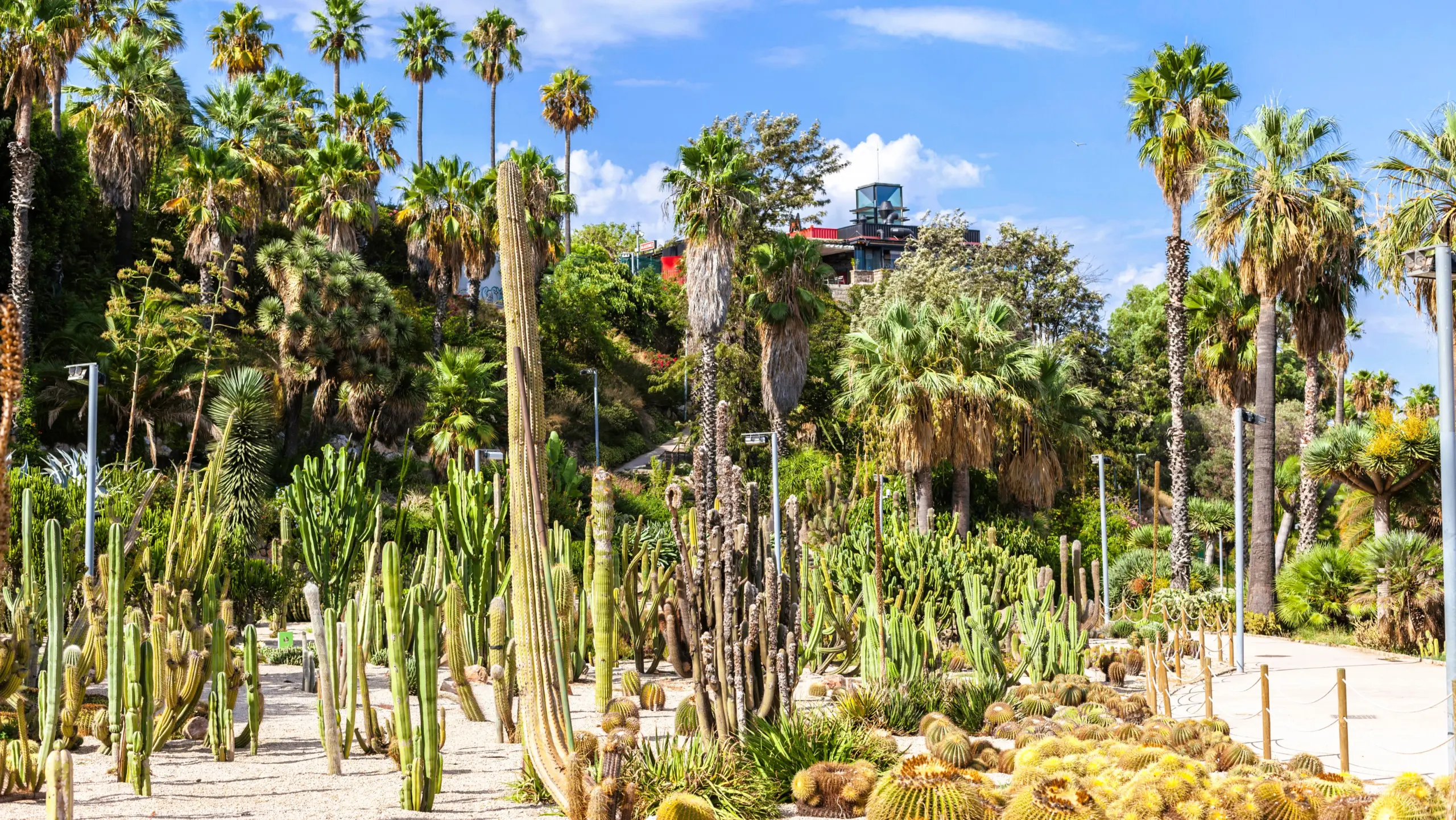
Bubbly Tip: Go early to avoid the midday heat and enjoy stunning morning light over the port.
8. Parc del Laberint d’Horta – The Maze Garden
Hidden in the hills of Horta, the Parc del Laberint d’Horta feels like a secret dream. Barcelona’s oldest garden, it was designed in 1791 as a neoclassical maze of cypress hedges, marble statues, and quiet fountains. As I wandered through the labyrinth, sunlight filtered through the leaves, and laughter echoed from somewhere deep inside the green. I eventually found the small temple at its heart, a moment of calm and quiet victory. With its blend of symmetry and romance, Parc del Laberint d’Horta invites you to lose yourself, literally and poetically, in a living storybook of greenery and myth.

Bubbly Tip: Go early in the morning for solitude (and to have the maze almost to yourself). It’s especially photogenic after a light rain when the hedges gleam.
9. Palau Güell Rooftop – Gaudí’s Hidden Masterpiece
Just steps from La Rambla, Palau Güell hides one of Barcelona’s quietest marvels – a rooftop that feels like stepping into Gaudí’s imagination. Twenty mosaic-covered chimneys rise in a swirl of color and whimsy, each one different, shimmering under the sun like coral towers above the city. From this intimate terrace, the hum of Barcelona fades, replaced by the soft breeze and the glint of sea in the distance. Standing there, surrounded by light and silence, I could almost feel Gaudí’s mind at play – daring, poetic, and endlessly alive!

Bubbly Tip: Visit mid-morning or at golden hour when the tiles sparkle most vividly, and linger a little; it’s one of the few Gaudí rooftops where you can enjoy art, color, and calm all at once.
10. Jardins del Teatre Grec – Roses & Performance
Tucked into Montjuïc’s hillside, the Jardins del Teatre Grec blend art, nature, and peace. Built in 1929 around a Greek-style amphitheater, this garden blooms with roses, lavender, and cypress trees, creating one of the most romantic settings in Barcelona. I visited late in the afternoon when the air smelled of flowers and the light turned golden. Sitting on a warm stone bench, I could hear cicadas and distant applause from a rehearsal on the stage below. Even without an audience, the place radiated life – beauty and calm intertwined.
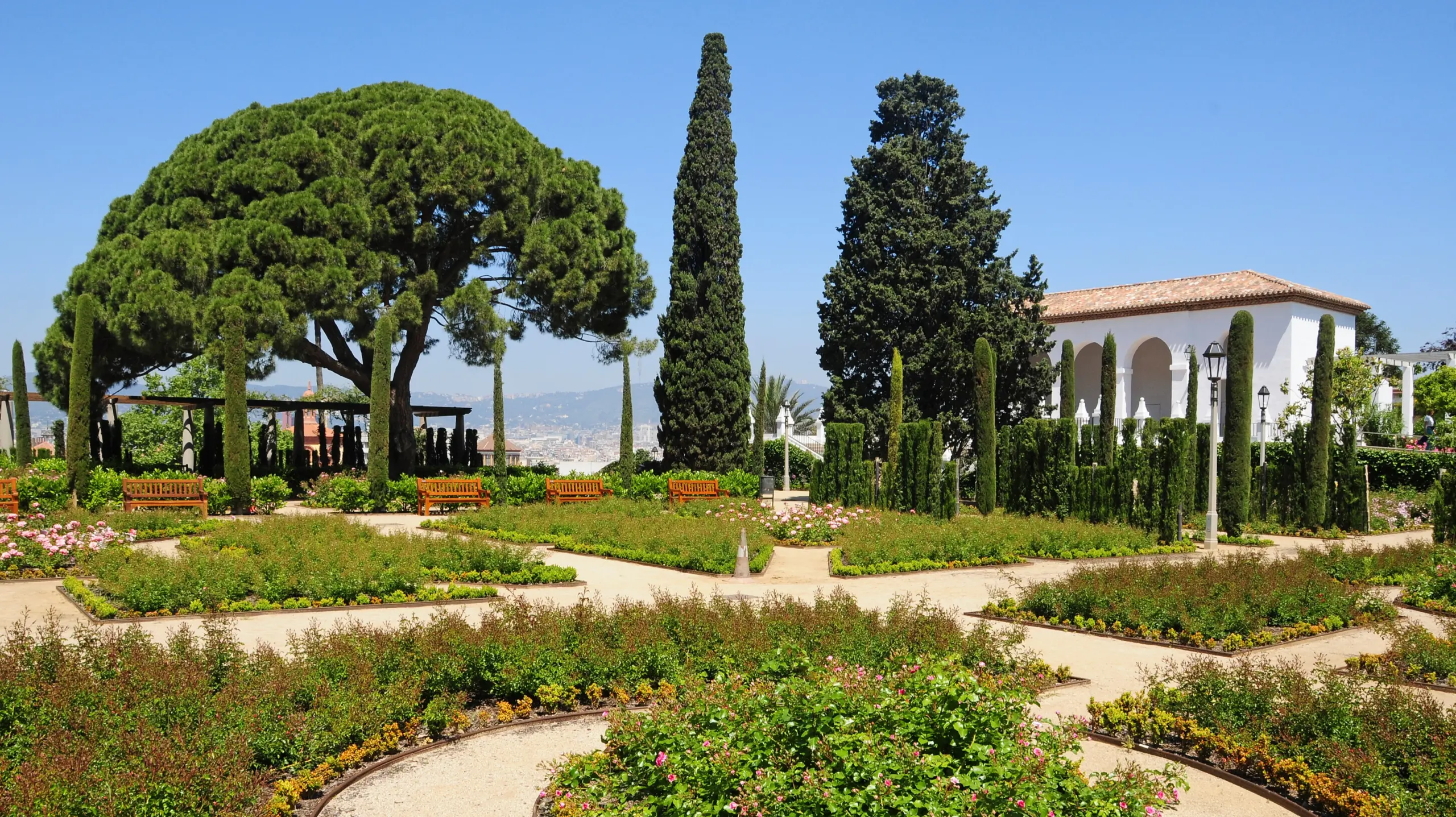
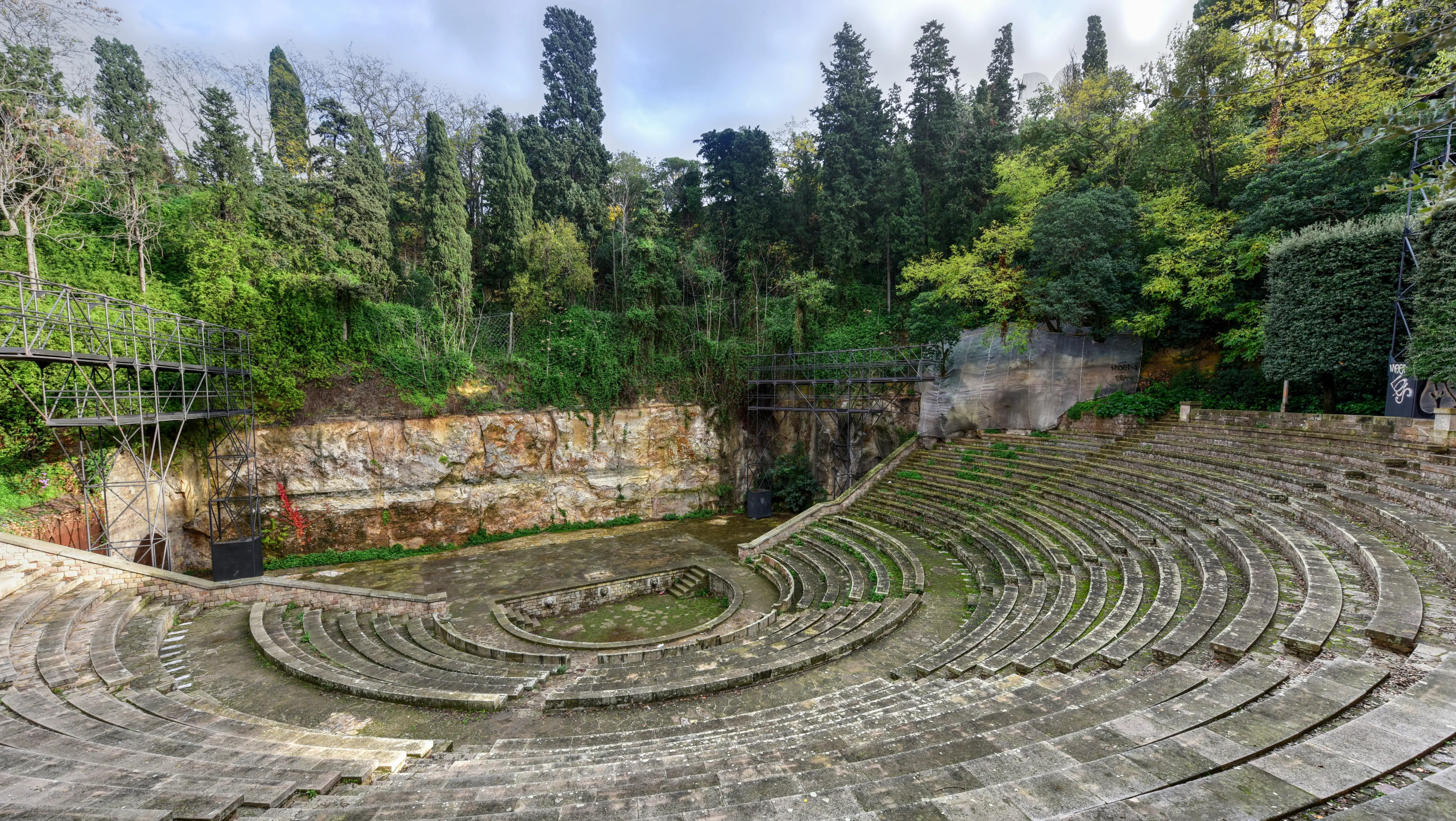
Bubbly Tip: Visit during the Festival Grec in summer to see concerts and performances under the stars.
Practical Tips
- Best time to explore: Early morning or golden hour, when the city is calm and bathed in soft light.
- Getting around: Most gems are reachable by metro or taxi – Montjuïc alone deserves a full day.
- Photography tip: Bring a wide lens for hilltop views and a zoom for architectural details.
- Local flavor: End your day like a Barcelonan – with vermouth, olives, and good company.
Final Thoughts
Barcelona’s hidden gems are the quiet heartbeat of the city, the places that don’t appear on postcards but live forever in memory. It’s in the hush of a garden, the scent of rosemary, the shimmer of the sea from a cactus hill, or the laughter echoing through a courtyard.
These are the corners where Barcelona whispers instead of dazzles, and sometimes, that’s when it feels most alive.
Have you discovered a hidden gem in Barcelona? Tell me your favorite secret spot in the comments, I’d love to hear it!
xoxo,
Bubbly 🌺

